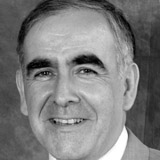 The newest architectural gem in Trinity College Dublin is the award winning Long Room Hub, a slim and elegant presence inserted among classical, neoclassical, and modern buildings.
The newest architectural gem in Trinity College Dublin is the award winning Long Room Hub, a slim and elegant presence inserted among classical, neoclassical, and modern buildings.
Just as its many windows offer unexpected vistas on to this beautiful campus, the activities of the Hub have injected fresh energy into interdisciplinary research and public engagement with the arts and humanities disciplines. The key to its success is skillful leadership and curating, ably primed by its director, Professor Jürgen Barkhoff.
Last week, the Hub hosted the most substantive and successful foray to date in Ireland into research in the medical humanities. Often held hostage by an overemphasis on teaching medical students—and thereby prone to spurious, sickly, and overreaching statements on perceived impacts, such as fostering empathy—this field of research has a hugely important role in calibrating the vast enterprise of healthcare.
This is not to deny the huge progress that has been made in the basic and applied sciences, but rather to recognise that scientists may approach problems with set ideas and biases, which can obscure the true meanings and relevance of the matter at hand. Or, as Anne Patchett wrote in her latest novel, State of Wonder: “Never be so focused on what you are looking for that you overlook the thing you actually find.”
The potential to be blinded by science was noted long ago by Immanuel Kant, no mean scientist himself, who stated that reason must approach nature [science] in order to be taught by it: but not in the character of a pupil who agrees to everything the master likes, but as an appointed judge who compels the witnesses to answer the questions he himself proposes.
And many such questions were proposed at the colloquium, largely based on philosophy and the future of the body, but also engaging with European researchers in literature, film studies, art history, social sciences, nanoscience, medicine, and nursing.
The point of departure was the increasing impact of science on the corporeality and identity of our bodies. This was viewed predominantly through the lens of phenomenology, particularly through Husserl, Merleau-Ponty, Deleuze and Sartre.
Phenomenology, as expertly introduced in an overview by Professor Dermot Moran of University College Dublin, is the deceptively simple sounding task of describing the world as it is, with an emphasis on examining the structures of consciousness from within. The phrases of Merleau-Ponty (“My body is the common fabric into which all objects are interwoven” and “One’s body is in the world as the heart is in the organism: it keeps the visible spectacle constantly alive, it breathes life into it and sustains it inwardly, and with it forms a system”) neatly catch its imperatives of subjectivity, perception, and consciousness.
The power of this approach to capture the wonder of the human condition was outlined by Martyn Evans of Durham University, whose Centre for Medical Humanities is one of the powerhouses of medical humanities research in the UK.
My own role as gerontologist emphasised that the future of the body is that of the ageing body, with its particular combination of toughness and frailty. The topic of post or transhumanism—what becomes of our bodies if we increasingly add, alter, or adapt them, as taken to extremes in movies such as RoboCop—seems to attract some quite bizarre speculation, and speakers generally treated it with due caution.
However, it fell to an arts engaged director from Leeds University, Stuart Murray, to forcefully point out that many visions of transhumanism are quasi-eugenic in nature, and therefore negate the inevitable disability that we all have or will have. We need to reject a sterile debate between transhumanism and bioconservatives, and instead focus on our frailty and finitude, he said.
The first day ended with a truly bizarre and unsettling interview in Dublin’s Science Gallery with Orlan, a French performance artist who uses cosmetic surgery as a central point in her performances. It was preceded by a short film about dramatic, if basic, reconstructive surgery in an Indian leper colony, which served to underline the narcissistic and self-indulgent nature of her art.
Other presentations at the conference included an intriguing project on the phenomenology of auditory hallucinations, the evolution of Marcel Duchamp’s final major art work, the undermining of certainty in our bodies with illness, and a thought provoking overview of how micro-chimerism shifts the conventional paradigm of “self vs other” to the view that normal “self” is constitutively chimeric.
The key challenge of maintaining scholarship, parity of esteem, and meaning in interdisciplinary work, especially in the often dramatically different cultures among the medical humanities, was insightfully explored. It presented us with the concept of “experimental entanglements,” which neatly catches the actual experience of the work, while providing better articulated strategies for joint working than the anodyne and imprecise formulation of “interdisciplinary.”
It was deeply refreshing to participate in two days of medical humanities research, focusing on deep topics and asserting its critical importance, without once mentioning undergraduate medical education.
The engagement of the philosophers with meaning and purpose in the worlds of health and illness was particularly impressive. Meanwhile, the broader enmeshing—or entangling—of the humanities and healthcare was reassuring and exciting in equal measure for the future of research in the medical humanities.
Desmond (Des) O’Neill is a geriatrician and cultural gerontologist in Dublin. He is also the local lead for the IAGG-ER Congress in 2015.
